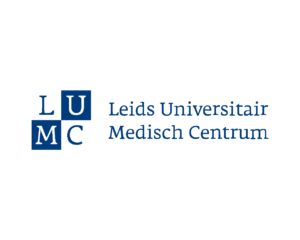Dynamic Anatomy is an interactive HoloLens application that is used in medical education. The tool uses mixed reality and motion tracking, which allows users to study the functional anatomy of the human body, in this case the ankle. The technology produces a virtual lower leg that ‘floats’ through the classroom, as it were real. Students can walk around it, under it, turn parts on and off, and make the ankle joint move. This should lead to better study results.
‘The idea for the application came when the HoloLens and the HoloAnatomy application were launched. These allowed users to study a static model of the body. However, there was a great deal of untapped potential’, said Dr Beerend Hierck. In late 2016, Leiden University Medical Centre (LUMC) and Leiden University’s Centre for Innovation (Thomas Hurkxkens and Leontine van Melle) won the 2016/2017 SURF ICT Innovation Challenge (SURF is the collaborative ICT organisation for Dutch education and research). With the aid of a €20,000 subsidy, they developed a proof of concept which enabled students to study the anatomy of the ankle joint based on case histories and joint movements. In the summer of 2017, TedX named the application as a finalist in the ‘best new education technology 2017’ competition.
Dynamic Anatomy was developed to motivate students and to reduce the length of training. Many students find it difficult to thoroughly understand complex joints such as the ankle. They currently learn two-dimensionally, from books. This knowledge, however, has to be applied three-dimensionally in practice. Alternative instruction methods such as those using a dissecting room are time-consuming, expensive and there is limited space available. The developers hope that Dynamic Anatomy will be an important step in allowing medical students to learn the functional anatomy of the human body in a more accessible manner.
Experts (such as orthopaedic surgeons) and other stakeholders responsible for the learning outcomes of study programmes are closely involved with the tool’s development; partly to ensure that the application meets the programme’s educational requirements. Furthermore it is important that users, teaching staff and students are motivated and inspired regarding the potential of the application. Students are now helping to further develop the application, and partners including InSpark, Zygote and Microsoft have been refining the technology. The first pilot studies are currently being carried out with various types of education. The first tests with students have proven that assumptions made with regard to increased motivation are correct.
Dr Hierck: ‘It is good that the institution also gives us the freedom to innovate. Developing on the basis of a problem or question helps prevent the gadget effect; innovation based simply on what is technically possible.’ The tool’s development is also linked to educational theories, which makes it possible to measure the effects and any added value. It is hoped that the tool will therefore stimulate explorative, effective, collaborative and active learning. ‘The idea is not, however, that Dynamic Anatomy will replace current educational methods, but that education will be aligned with the needs of the student, as part of the shift towards personalised learning.’
The educational applications of mixed reality in healthcare are not only limited to medical education. The potential for patient education is closely linked with the application’s further development. In the near future, other joints will be added to the application and the effectiveness of the tool examined in comparison to conventional teaching methods. The application’s potential in other disciplines is also being explored.

